We started our trip in Nepal visiting its capital, Kathmandu, and preparing for our trek around the Annapurna Circuit. After the trek and spending some time in Pokhara, we came back to Kathmandu for wrap up the sightseeing we had begun previously.
Swayambhunath
One of the most sacred places in Nepal, Swayambhunath is a stupa located on the top of a hill overlooking the Kathmandu valley. The 365 step climb up the hill provided us with unparalleled views of the city and the mountains in the background.

On the way up, we saw a music/karaoke video shoot where a lady dressed up in local costume pretended to sing some local song as a cameraman recorded her. It was really interesting to watch the whole thing along with a group of locals. Now we know where all of those karaoke videos on buses come from!

Swayambhunath is also known as the monkey temple and we soon found out why. Multiple monkeys wandered around the staircase looking for food and drinks. Julie happened to have a juice box in her hands, which lured many monkeys – some of them quite aggressive. I stood in between Julie and the monkeys, preventing them from jumping on her like they did to a local lady who ended up losing her water bottle. Later on we warned another local lady to move just as another monkey was able to pee on her.

At the top, we had our first glimpses of Swayambhunath. The climb up had already taken our breaths away (literally!), but the stupa was pretty impressive. The white dome representing the whole world served as a base for the Buddha eyes that watched in all four cardinal directions with wisdom and compassion. The waving colourful prayer flags added to the view.

Around the stupa, several other Tibetan-style temples were filled with locals worshipping Buddha. Some walked around the stupa playing drums and singing – it was certainly a lively atmosphere and we sat around for a while watching the locals in their routines.
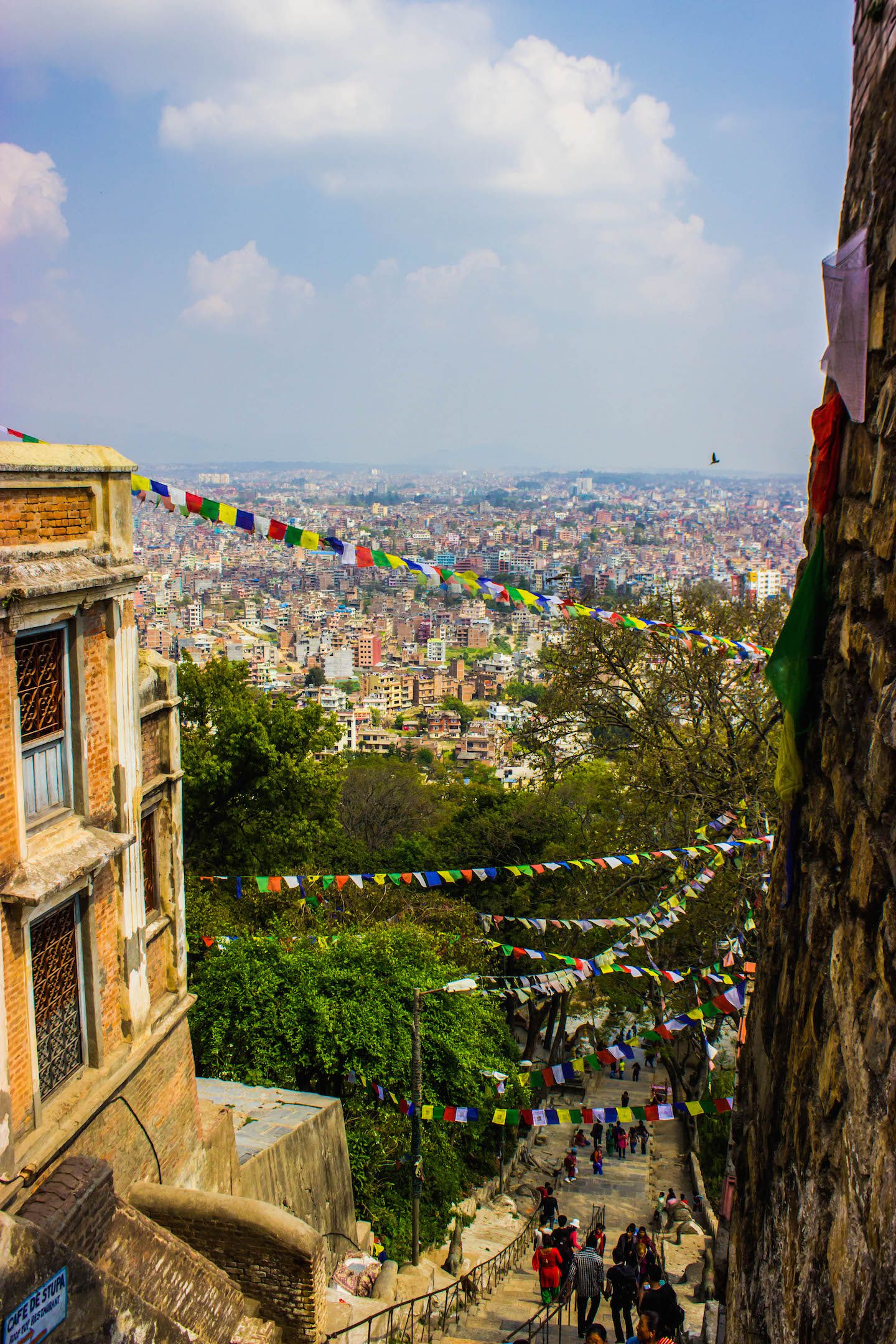
Kathmandu Durbar Square
Right after visiting Swayambhunath, we headed directly to Kathmandu Durbar Square. A complex of temples and shrines where kings were coronated and lived, the temples were built from the 12th to the 18th century. It was a decidedly picturesque part of the city.
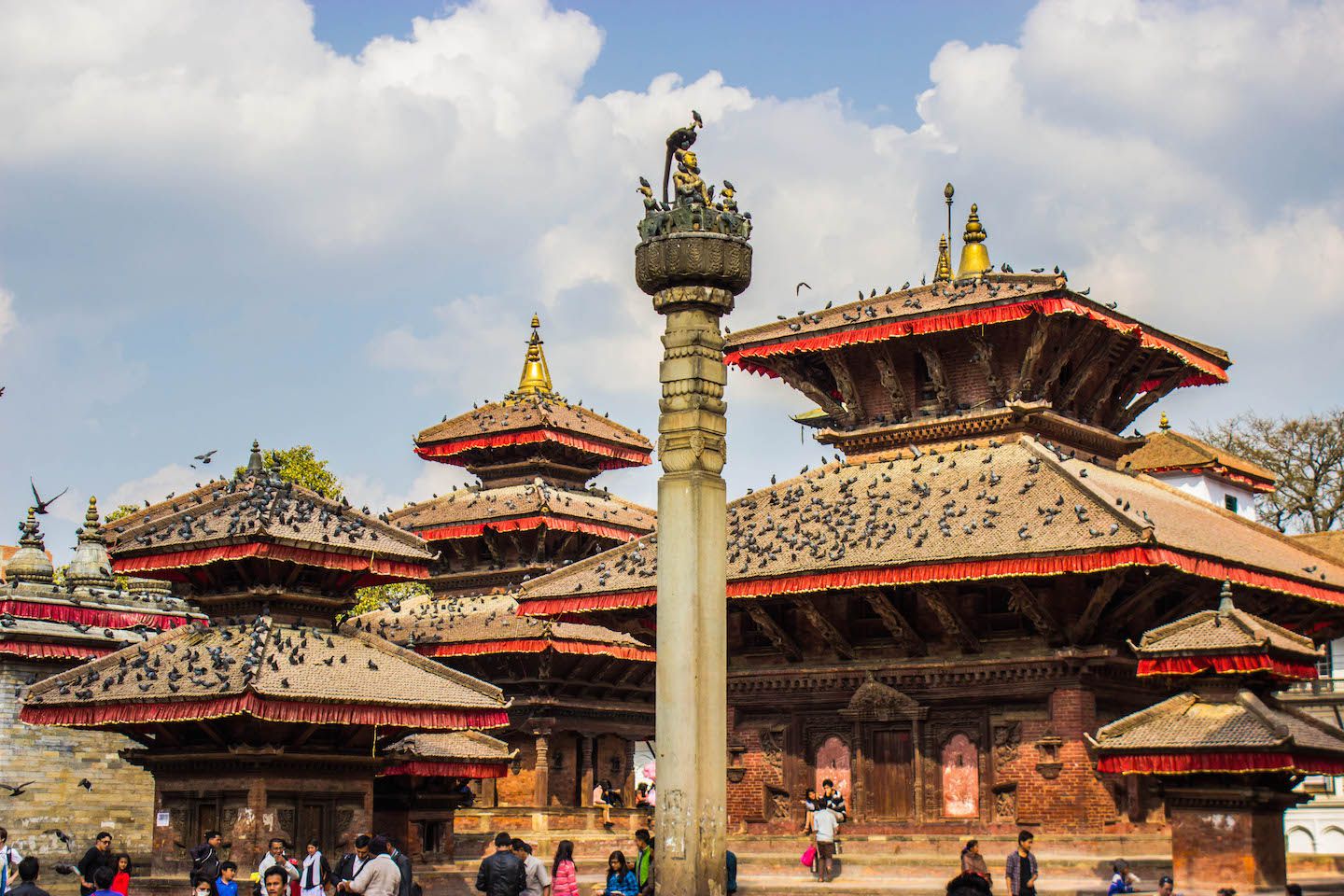
We visited the square on a Saturday and, just like Swayambhunath, it was lively and packed with locals; however, this time it seemed more like a socializing environment than a worshipping one. Some were sitting in groups chatting, some were couples on a date, while others took their kids out to play.

The charming temples were a great example of Newa architecture with its use of brick and carved wooden doors, windows and roof struts. This type of architecture is rarely found outside of Nepal, which made seeing it here even more special.
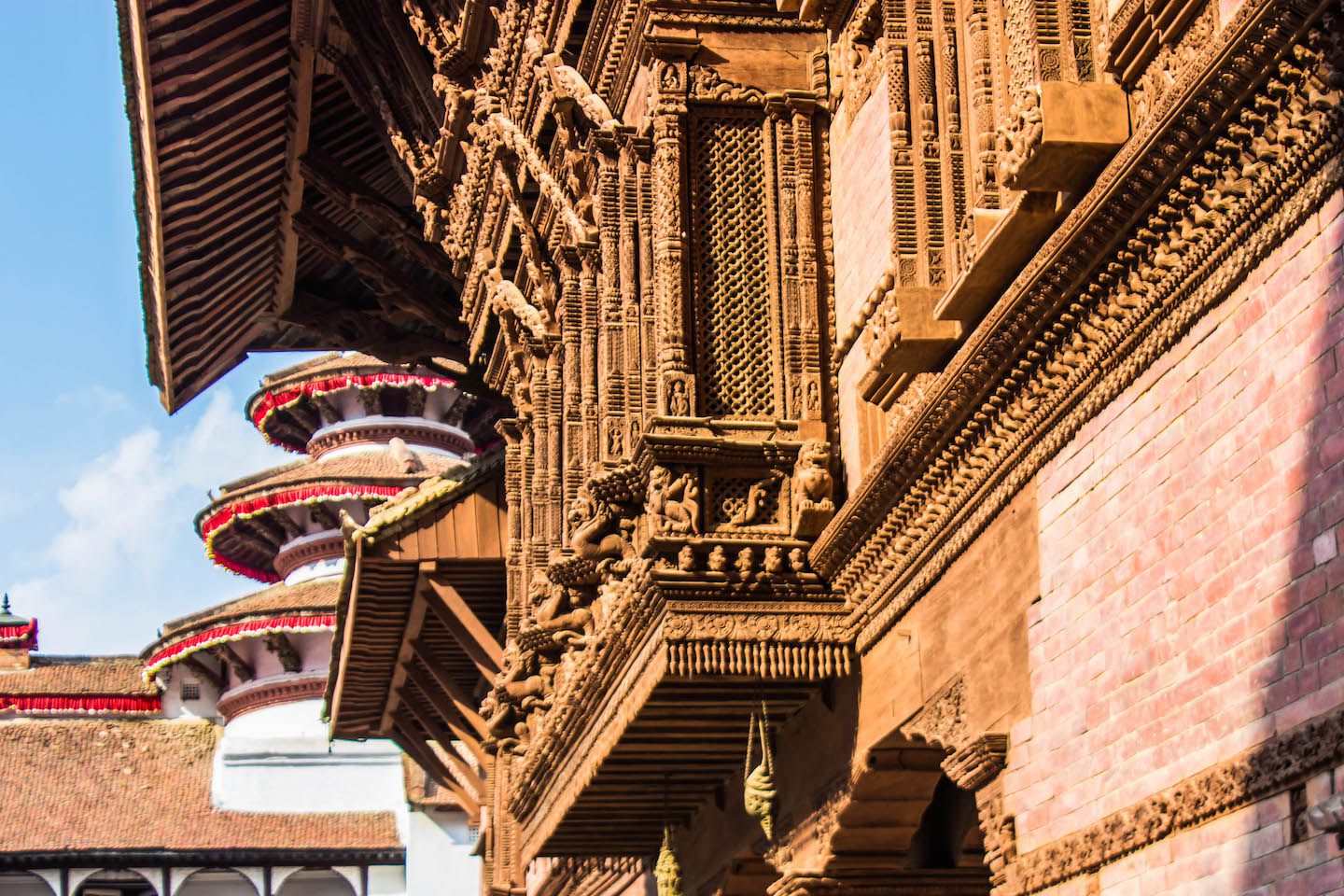
I climbed to the 9th floor of one of the temples in the palace and had a panoramic 360 view of the surrounding area. The square tiered roofs of many temples stood out in particular.

Patan Durbar Square
Patan is a city just south of Kathmandu. Separated by the Bagmati river, Patan is practically a suburb of Kathmandu. Similar to the Kathmandu Durbar Square, the Patan Durbar Square is home to several temples, both Hindu and Buddhist. The Newa architecture was also present here and in the surrounding temples as well.
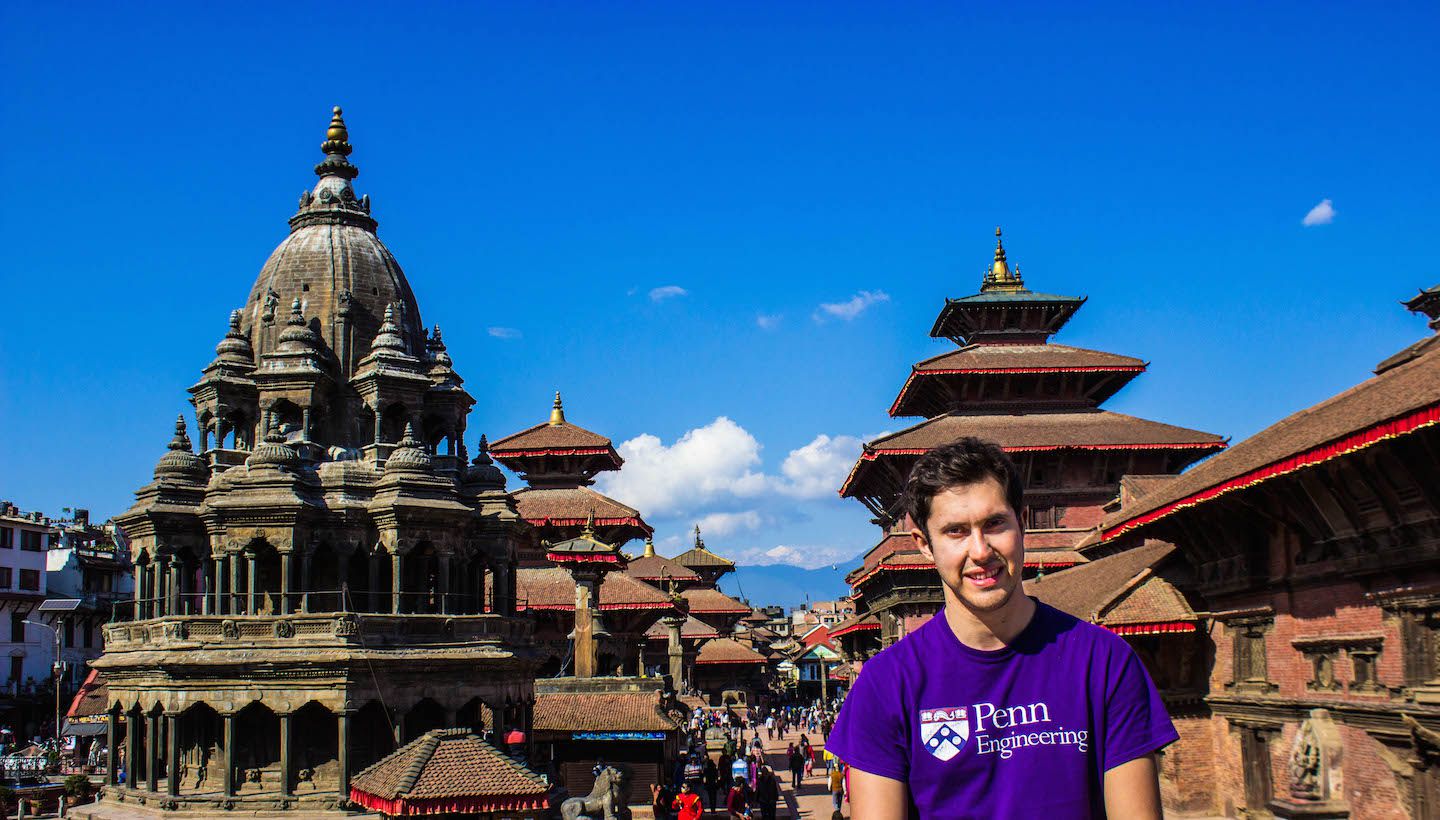
We also explored the areas around the Patan Durbar Square, where a few smaller temples caught our attention and were worth a visit. We’ve seen quite a considerable amount of Hindu and Buddhist temples; however, those in Nepal had a different look to them and surprised us everytime with its unique architecture and intricate relics.

Patan was a nice day trip from Kathmandu and a break from the touristy areas in Kathmandu.
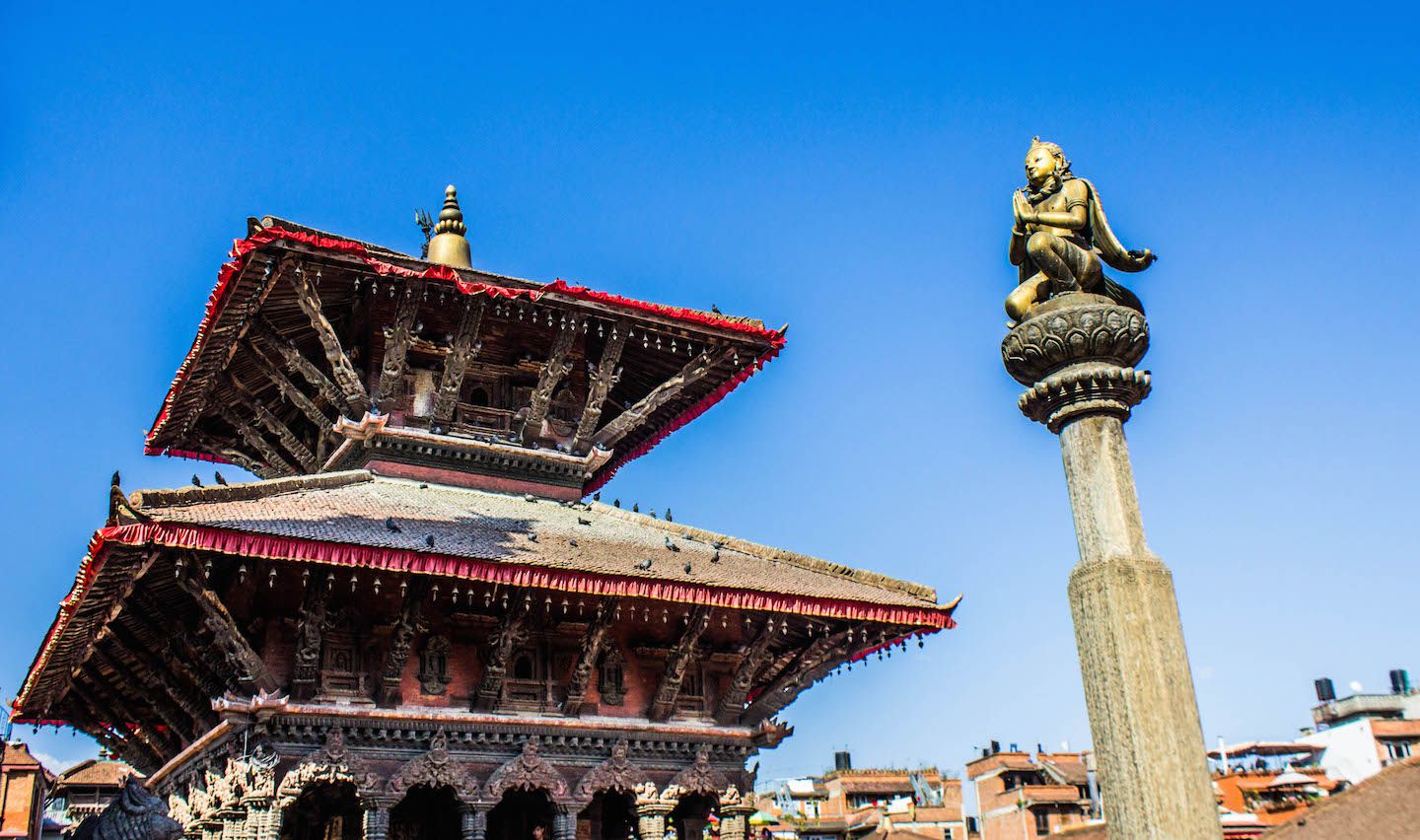
Celebrating Holi in Kathmandu
Luckily, we just happened to be in Kathmandu during Holi, the Hindu spring festival of colours and love. A bonfire at Holi’s Eve starts the festivities, where families get together, sing and dance. On Holi day, a major party takes place on the streets, where people play and colour each other with dry powder, colored-water or colored-water-filled balloons. Anybody is fair game, from friends to strangers, men to women. If you are on the streets during Holi day, you are pretty much guaranteed to come back home all coloured.
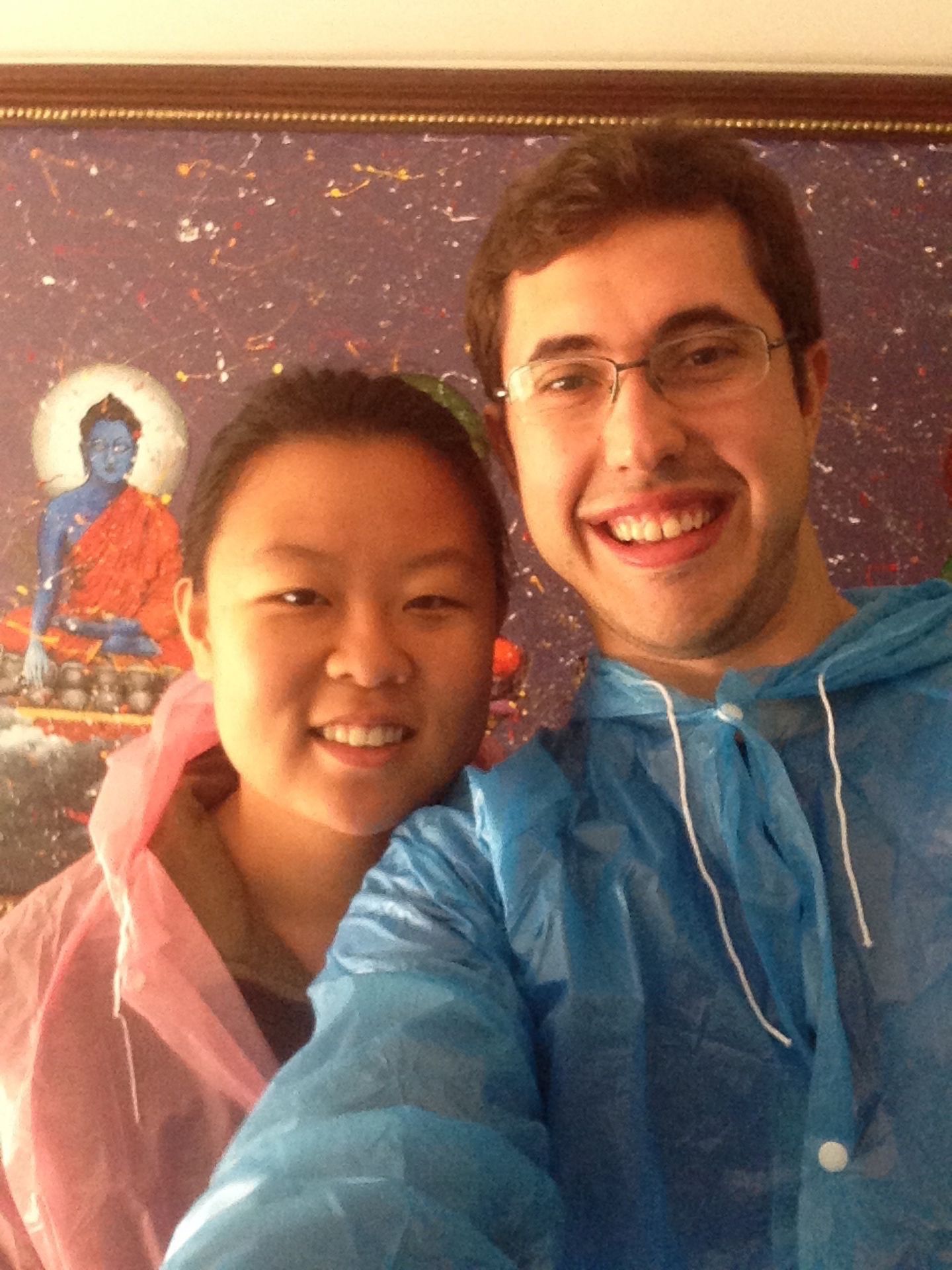
Julie and I decided to participate for a short period and join in on the local culture. In preparation, we bought some cheap rain ponchos the day before so we wouldn’t stain our clothes. We were excited to experience this new holiday, but at the same time apprehensive, since we didn’t know what to expect.
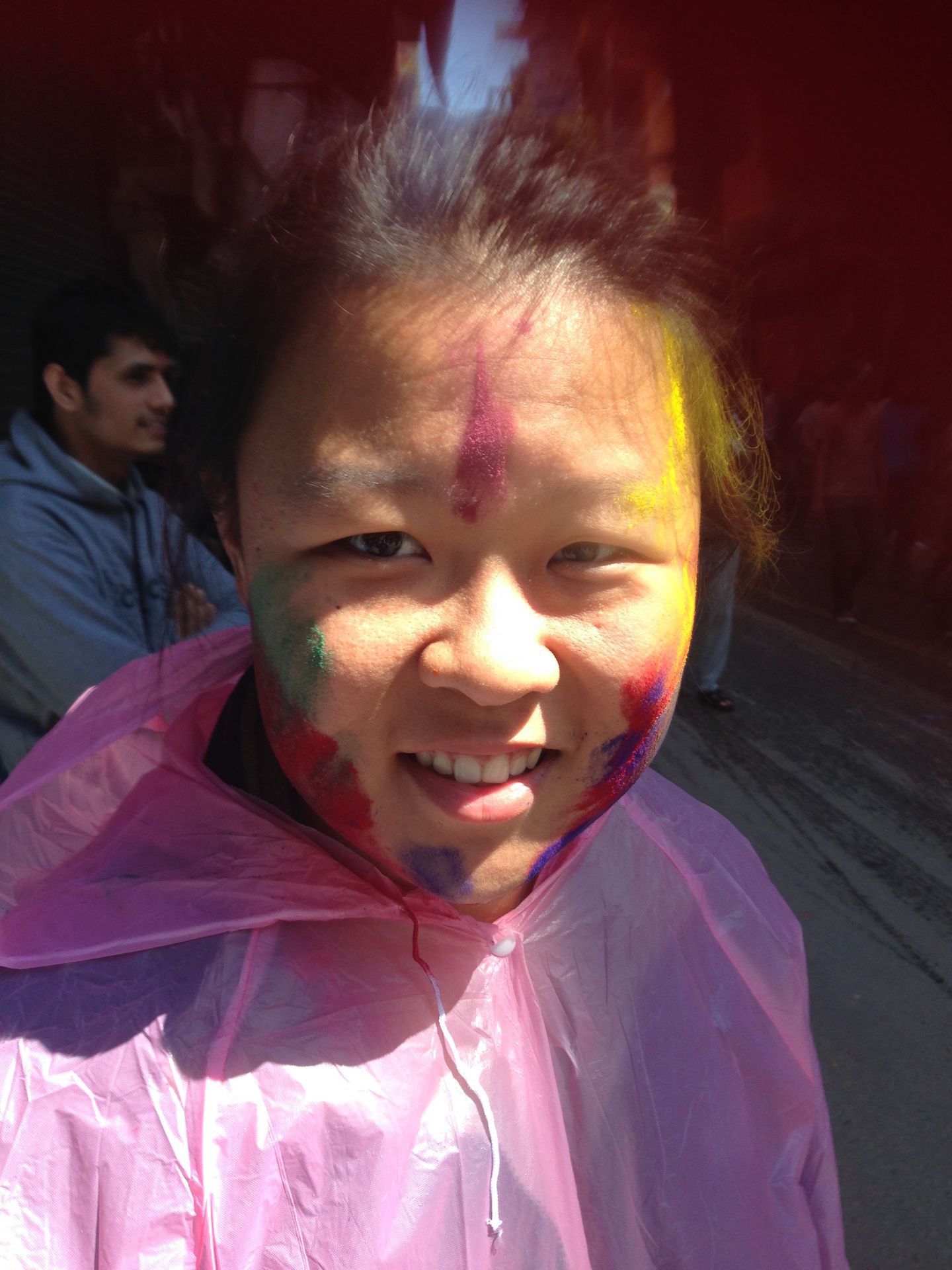
Within a few minutes on the streets, our faces were completely coloured – thankfully the rain ponchos worked and our clothes were intact. Lots of locals laughed at us, though, because the whole point of Holi was to be coloured head to toe. While on the streets, we saw a bunch of foreigners and locals completely covered in coloured powder from head to toe. Some were also soaking wet, as many locals threw buckets of water from their apartment windows down to the streets.

It was very thrilling to be part of this lively festivity and hopefully we will get to experience it again some time in the future.
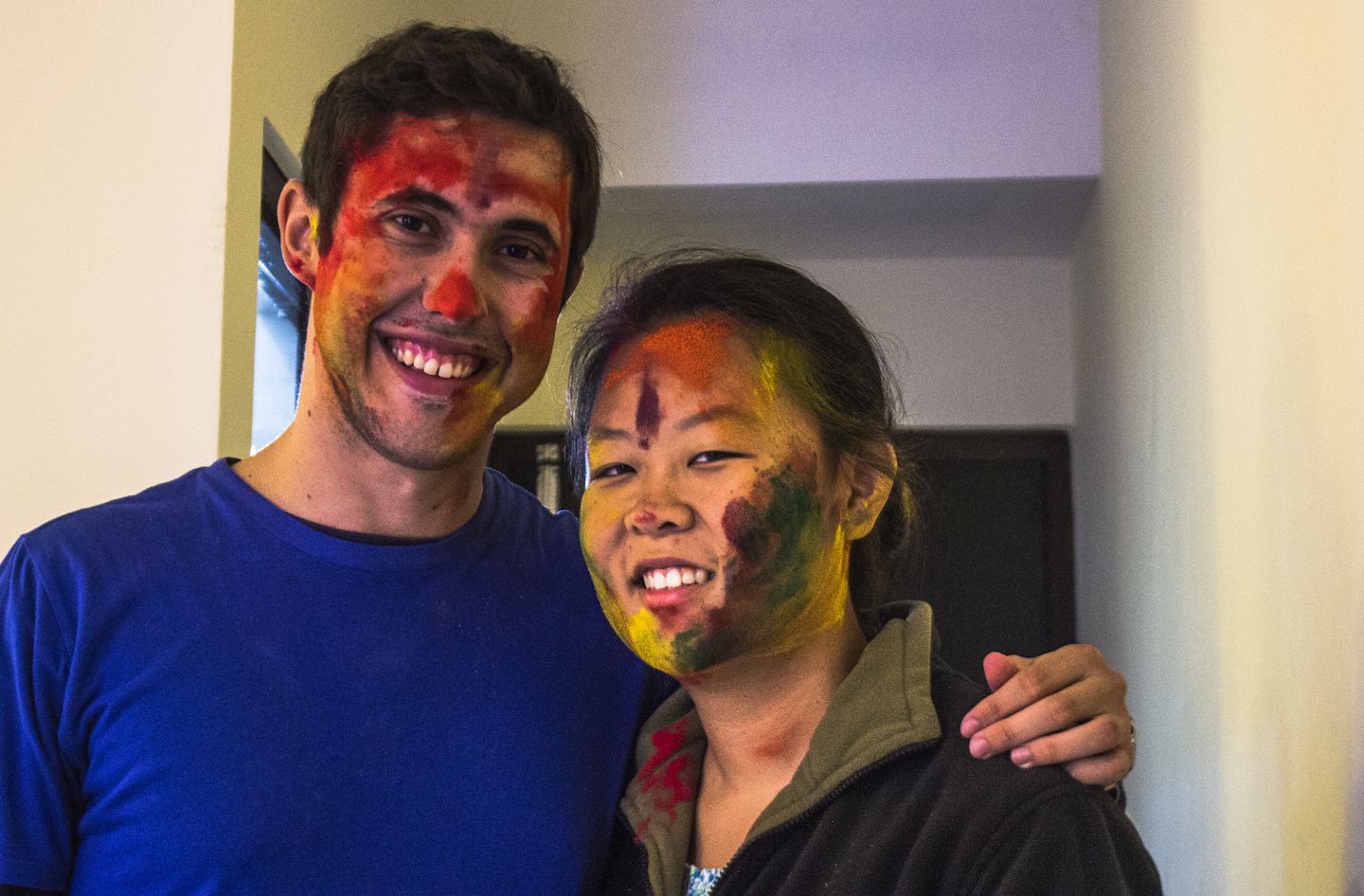
Kathmandu has been one of the most memorable cities we’ve been to. We will miss the temples of Durbar Square, the view from Swayambhunath and being targeted during Holi.
For more pictures from Kathmandu and Patan, please visit the galleries!

